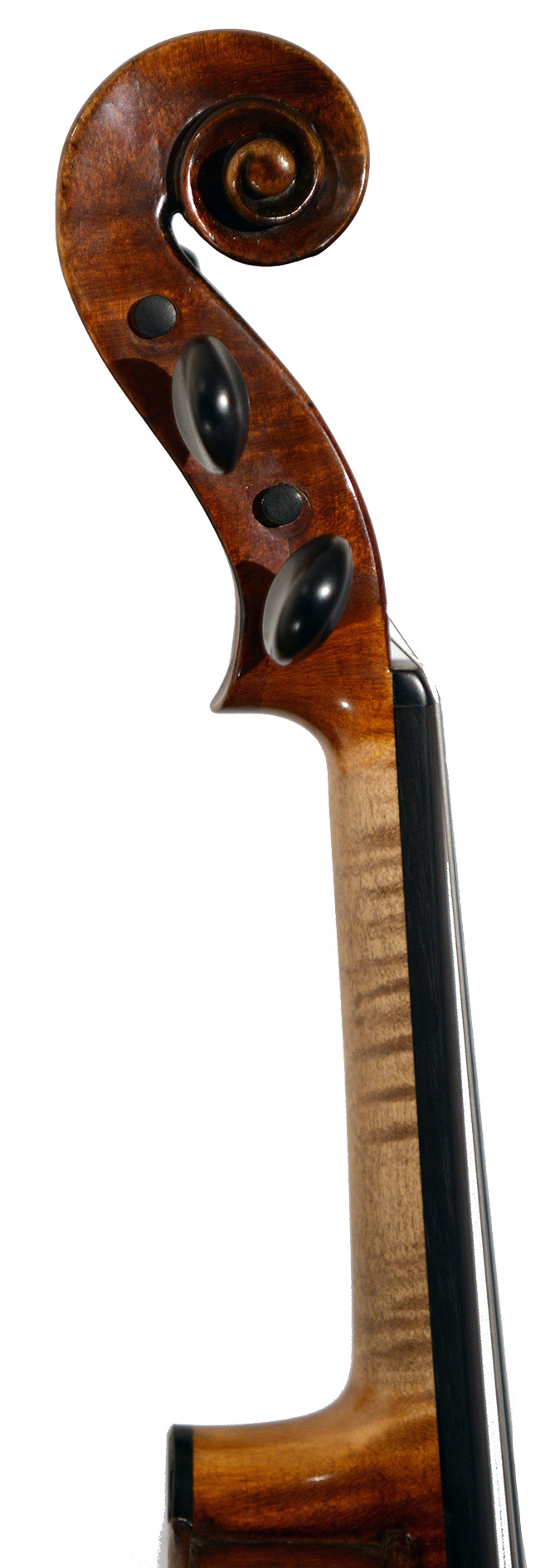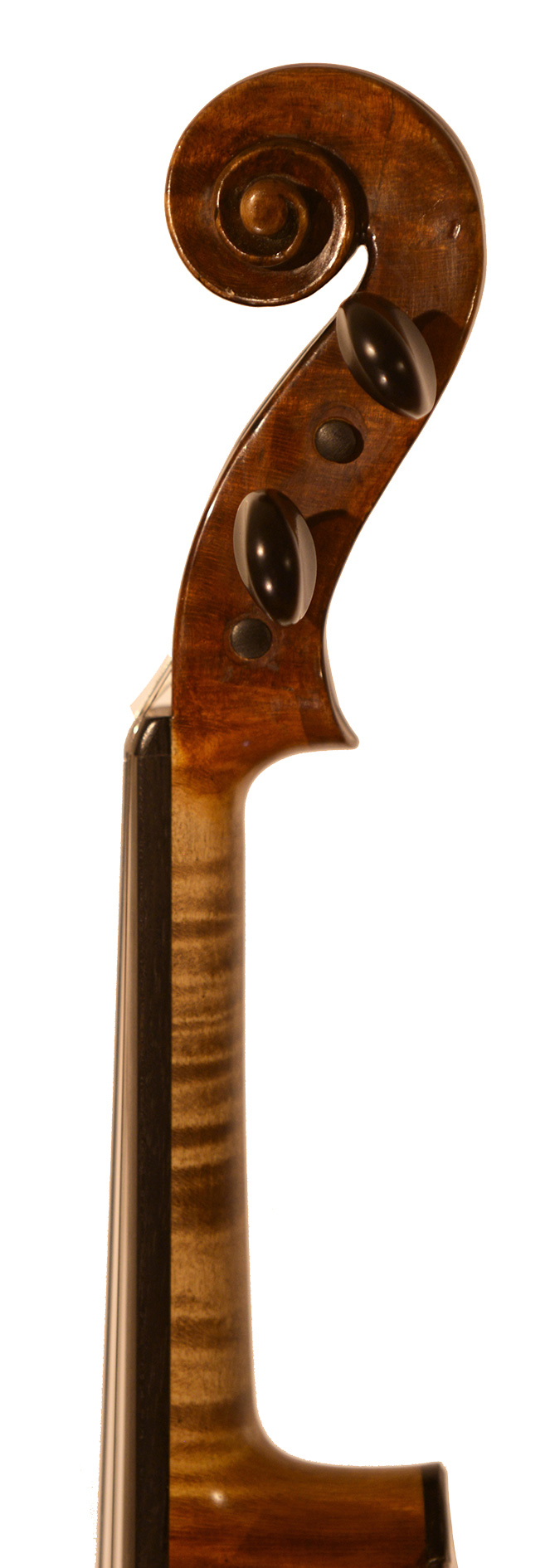Giuseppe Antonio Rocca c1855
Giuseppe Rocca is regarded as one of the top ranked Italian violin makers of the 19th century.
He studied violin making at the master violin maker Pressenda's (1777-1854) atelier before he established his own atelier in Turin in 1834.
He produced high quality violins especially in and after 1840 and received many awards in exhibitions in Turin and Genoa, which attracted considerable attention.
He was on friendly terms with Luigi Tarisio, a historic collector and dealer, which brought him a chance to meet the celebrated Stradivarius 1716 "Messiah," which was included in Tarisio's collection. After that, influenced by Stradivarius, he strove to establish his own style.
He sought after high levels of sound quality with matchless enthusiasm, which was explained by his strict selection of materials.
His golden period is said to be 1840s and 1850s. A good example is Gunter Pichler, who used to be the concert master of Vienna Philharmonic Orchestra and the first violin of Alban Berg Quartett and uses a Rocca of his golden period as his main violin.
This Guiseppe Rocca was made in circa 1855, which can be called as mature period of his golden period, and followed the pattern of Stradivarius "Messiah," which he produced all through his life.
On the certificate issued by William Moenning & Sons (the largest instrument company in USA in those days) in 1974, it is written that Rocca himself selected high sound quality material for the back.
Actually it shows uniqueness that strictly selected maple is used on the back.
Its sound has deep body, abundant volume and deep tones which feels like history, and meets internationally celebrated soloists' demands.





